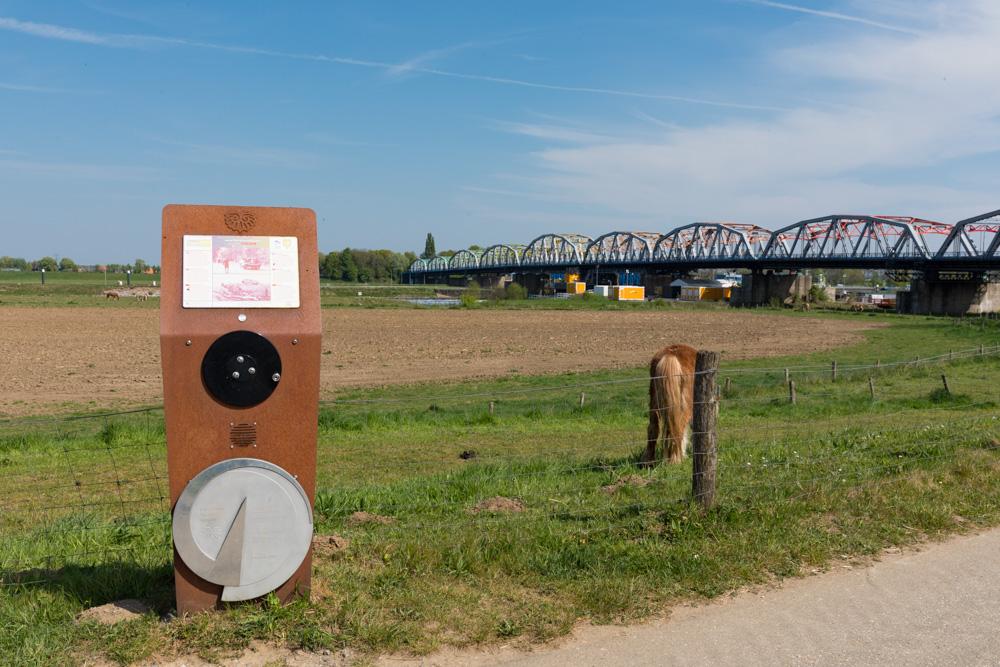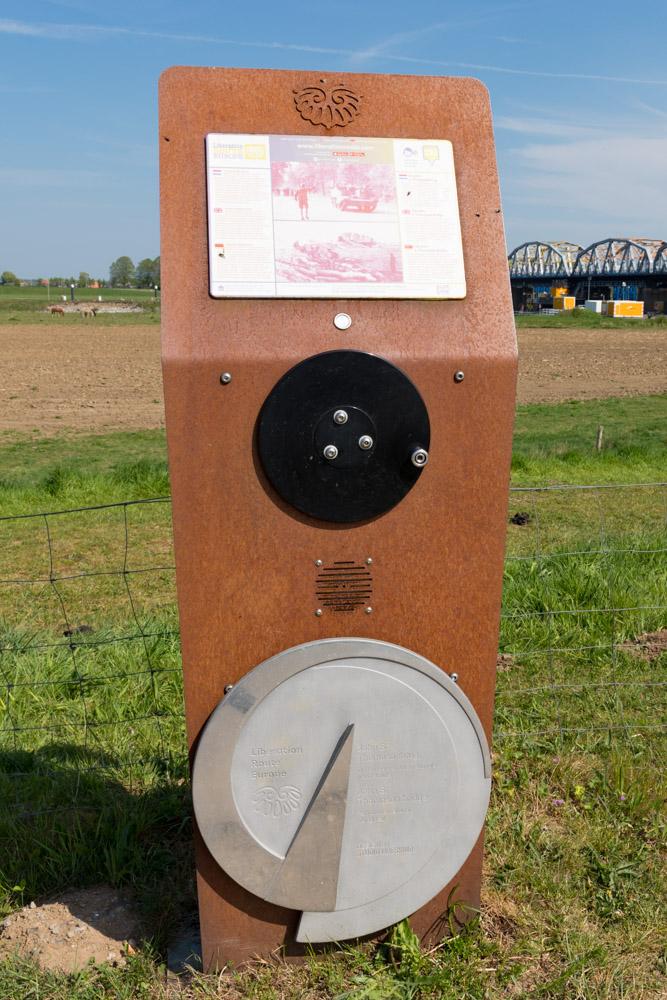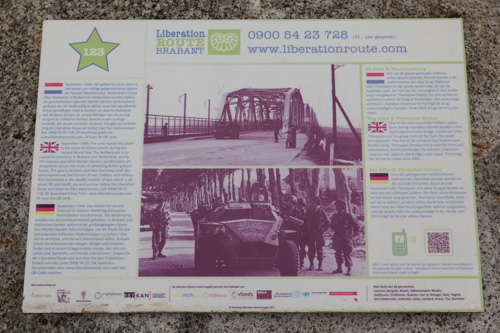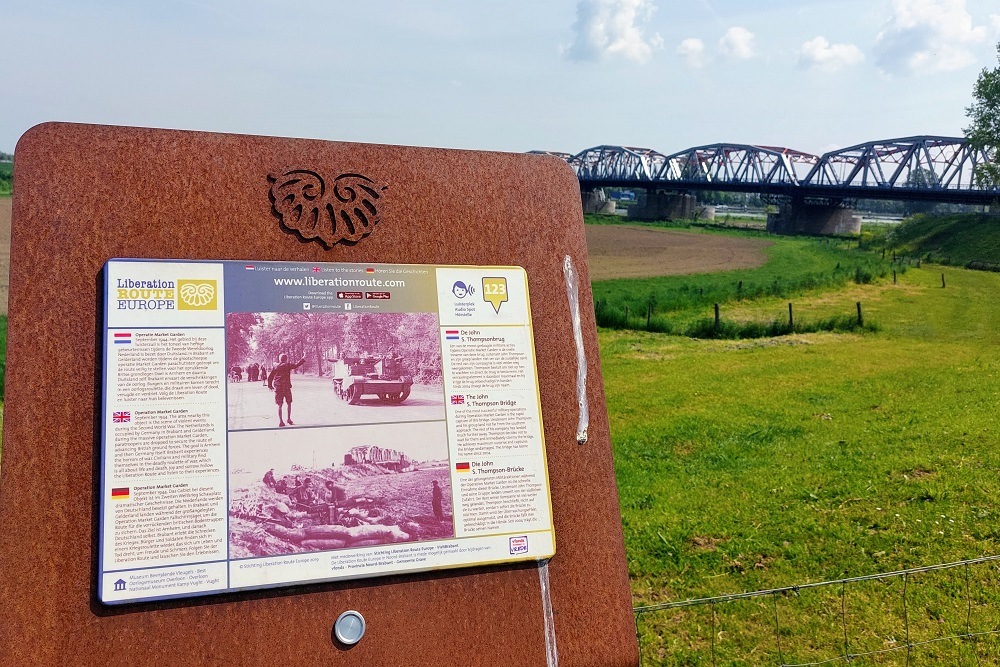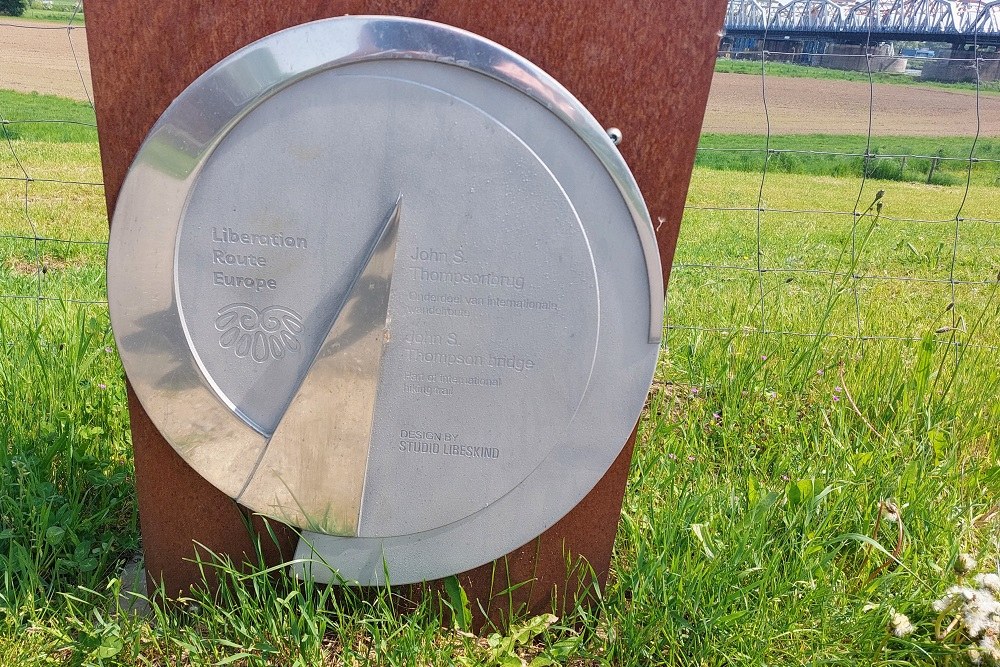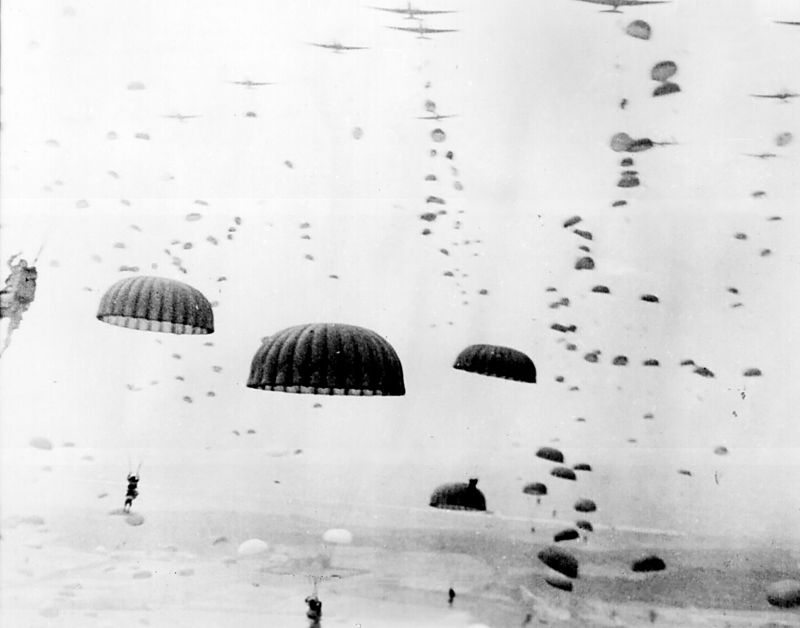Liberation Route Marker 123: The John S. Thompson Bridge
The John S. Thompson Bridge
One of the most successful military operations during Operation Market Garden is the rapid capture of this bridge. Lieutenant John Thompson and his group land not far from the southern approach. The rest of his company has landed much further away. Thompson decides not to wait for them and immediately storms the bridge. He achieves maximum surprise and captures the bridge undamaged. The bridge has borne his name since 2004.
The bridge over the Maas at Grave was an important strategic point in the route of Operation Market Garden. The 504th Parachute Infantry Regiment of the American 82nd Airborne Division was ordered to capture the bridge undamaged. E-Company from this regiment would storm the bridge from the Brabant side. But the company jumped too early and landed far from its goal.
Thanks to his alertness, a small group of 16 men led by Lieutenant John Thompson, landed near the bridge. Thompson decided to immediately begin the assault, because they still had the element of surprise. The rapid capture of the bridge was one of the most successful actions on September 17 1944.
For the rest of the war, the bridge at Grave was important for the logistics build up of the British XXXth Corps, which from February 8 to March 5 1945, under the code name "Operation Veritable", successfully attacked the German Rhineland from the area around Nijmegen.
Audiospot - The John S. Thompson Bridge
Liberation Route Europe is a certified Cultural Route of the Council of Europe. With hundreds of sites and stories in nine European countries, the route links the main regions along the advance of the Allied Forces in 1943-1945.
The entire route consists of themed routes that can be travelled by by hiking, walking, cycling and car. These routes pass numerous historical and interesting sites and tell stories from a multitude of perspectives that were important in the final phase of World War II.
Many routes feature listening spots, offering the opportunity to listen to a historical story at a location. In addition, many ‘Vectors of Memory’ have been placed, indicating that the passer-by is on one of the Liberation Routes.
The routes can be found on the Liberation Route Europe website or in the app through which many stories can also be listened to.
Do you have more information about this location? Inform us!
Source
- Text: TracesOfWar & Liberation Route Europe
- Photos: Arjan Vrieze (1, 2), Arjan Vrieze (3), Peter Schipper (4, 5)
Related books
Nearby
Museum
Point of interest
Monument
- Memorial 82nd Airborne Division - Grave
- Monument Louis Ficq - Grave
- Mobilisation Memorial Grave - Grave
Cemetery
- Dutch War Grave Roman Catholic Cemetery Grave - Grave
- Commonwealth War Graves Roman Catholic Cemetery Grave - Grave
- Collective Grave Victims Bombing of Nijmegen Catholic Cemetery Wijchen - Wijchen
Remembrance Stone
- Stumbling Stone Rogstraat 2 - Grave
- Stumbling Stone Hamstraat 21 - Grave
- Stumbling Stone Hamstraat 28 - Grave
